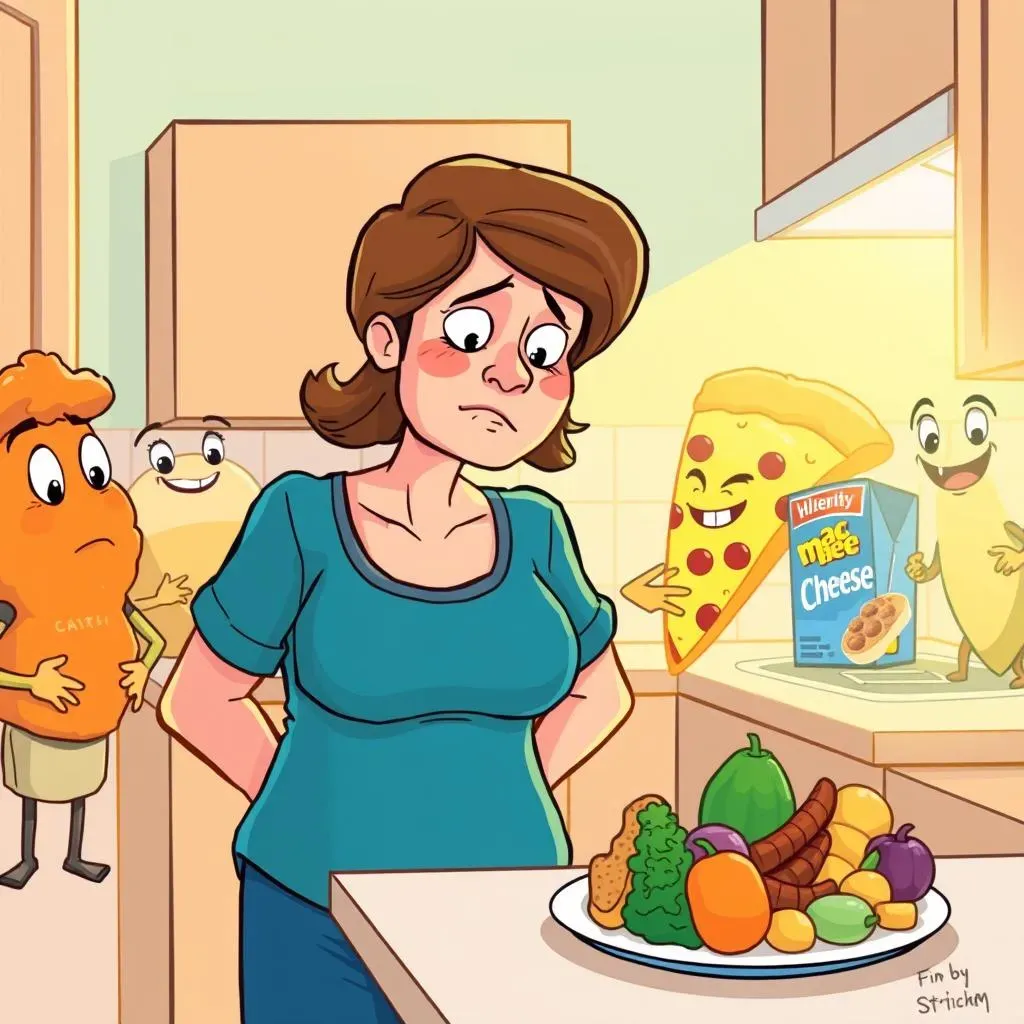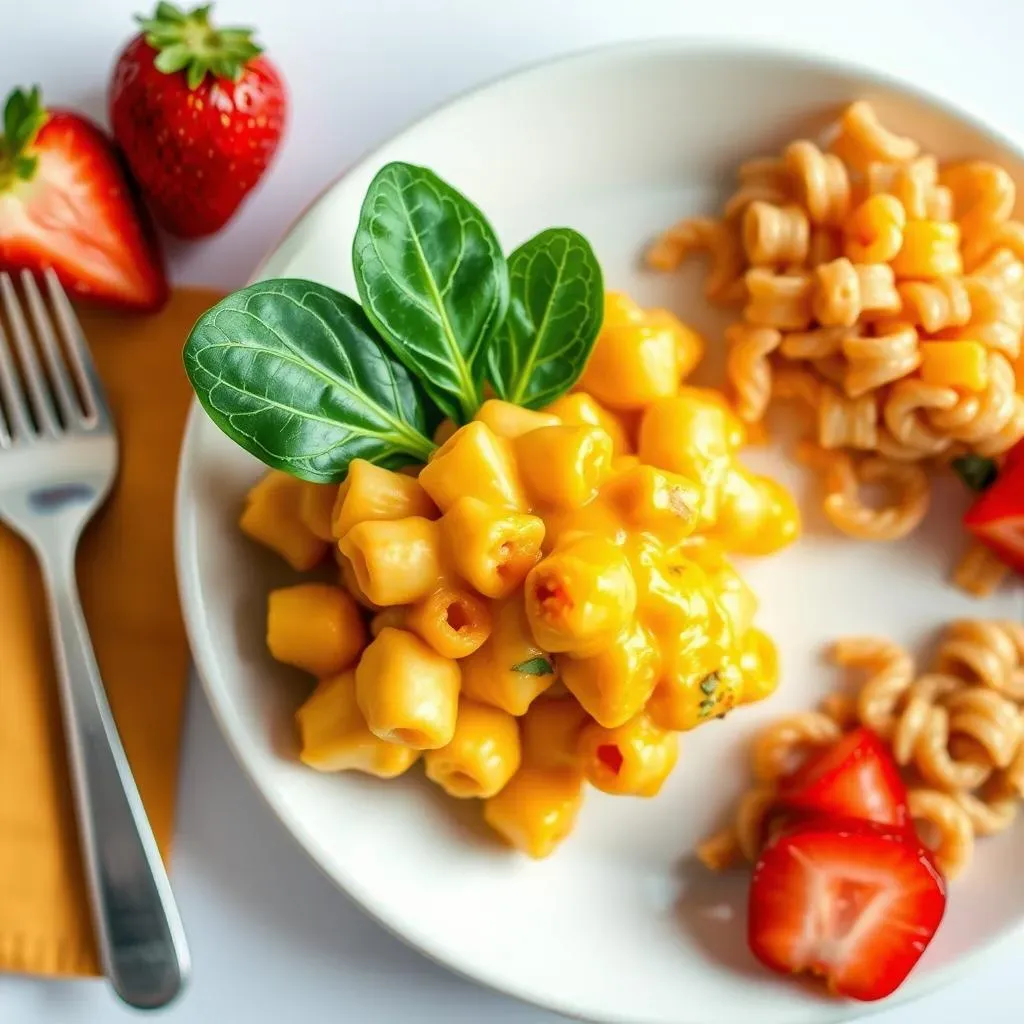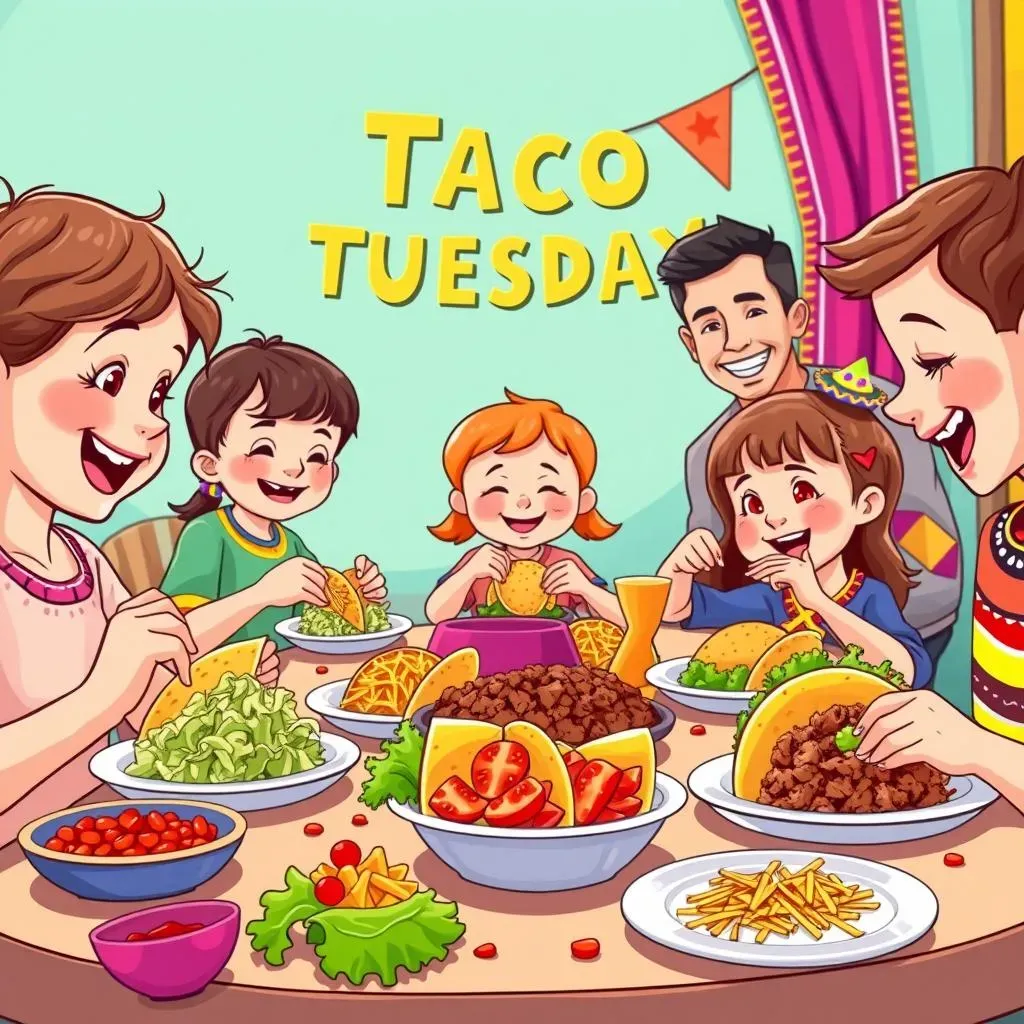Table of Contents
Is the nightly dinner battle leaving you exhausted? You're not alone! Many parents struggle to find healthy meals that their kids will actually eat. Forget the processed stuff and sugary sauces – it's time to reclaim dinnertime with recipes that are both nutritious and delicious. We're diving headfirst into the world of healthy dinner kids love, offering practical strategies and kid-approved recipes that will transform your evenings. From sneaky veggie-packing techniques to fun presentation ideas, we'll equip you with the tools to make mealtime enjoyable for everyone. Get ready to discover simple swaps, exciting flavors, and ways to involve your kids in the cooking process. Say goodbye to picky eating woes and hello to happy, healthy dinners the whole family will enjoy!
Why It's a Struggle: Getting Kids to Eat Healthy Dinners

Why It's a Struggle: Getting Kids to Eat Healthy Dinners
The Allure of the "Kid-Friendly" Menu
Let's be real, the default "kid-friendly" menu is usually a nutritional wasteland. Chicken nuggets, mac and cheese, pizza – these are the staples that many restaurants and parents rely on. They're easy, familiar, and, let's face it, often heavily marketed to kids. But these foods are typically loaded with processed ingredients, unhealthy fats, and excessive sodium, offering very little in the way of actual nutrients. It's a constant battle against convenience and clever advertising.
Picky Eating: A Developmental Minefield
Picky eating is practically a rite of passage for toddlers and young children. It's often linked to developmental stages, a natural wariness of new things (hello, evolution!), and a desire for control. Kids might reject perfectly healthy foods simply because of their color, texture, or even the way they're presented. This can be incredibly frustrating for parents who are trying their best to provide balanced meals. It's not always about taste; sometimes, it's about asserting independence.
- Neophobia: Fear of new foods.
- Sensory Sensitivity: Dislike of certain textures or smells.
- Power Struggles: Refusal to eat as a way to assert control.
The Time Crunch: Convenience vs. Nutrition
In today's fast-paced world, time is a precious commodity. Many parents are juggling work, school, extracurricular activities, and household responsibilities, leaving little time for elaborate meal preparation. Grabbing takeout or relying on pre-packaged meals can seem like the only option, even though these choices are often less healthy and more expensive in the long run. It’s a tough balancing act, prioritizing nutrition when you're already stretched thin. Finding that sweet spot between convenience and health is key, but it definitely takes effort and planning.
Sneaky Strategies for Packing Nutrients into Kids' Dinners

Sneaky Strategies for Packing Nutrients into Kids' Dinners
Puree Power: Veggies in Disguise
One of the most effective ways to boost the nutritional content of your kids' meals is to sneak in pureed vegetables. Think beyond just baby food! You can add pureed carrots, spinach, zucchini, or butternut squash to sauces, soups, and even baked goods. The key is to blend them until they're completely smooth so that they're undetectable. A little bit of puree can make a big difference in their daily veggie intake without them even knowing it.
For example, add pureed butternut squash to mac and cheese for a boost of Vitamin A and fiber, or blend spinach into a fruit smoothie for an extra dose of iron. These small additions can significantly improve the nutritional value of your kids' favorite dishes.
Small Swaps, Big Impact: Upgrading Ingredients
Another simple strategy is to make small swaps with healthier ingredients. Instead of white rice, opt for brown rice or quinoa. Use whole wheat pasta instead of refined white pasta. Choose lean ground turkey or chicken instead of ground beef. These swaps might seem minor, but they can significantly increase the fiber, protein, and nutrient content of your meals.
You can also swap out sugary drinks for water or unsweetened beverages. Offer fruit as a dessert option instead of processed sweets. These small changes can add up over time and help establish healthier eating habits for your kids. It's all about making gradual, sustainable changes that they'll barely notice but will greatly benefit from.
Swap This | For This | Nutritional Benefit |
|---|---|---|
White Bread | Whole Wheat Bread | More fiber, vitamins, and minerals |
Sugary Cereal | Oatmeal with fruit | More fiber, less sugar |
White Rice | Brown Rice or Quinoa | More fiber and nutrients |
Top 5 Healthy Dinner Recipes Kids Actually Devour

Top 5 Healthy Dinner Recipes Kids Actually Devour
1. Cheesy Chicken & Veggie Quesadillas
Quesadillas are a winner because they're customizable and fun to eat! Start with whole wheat tortillas and fill them with shredded chicken (a great source of lean protein), black beans (fiber!), and a rainbow of veggies like bell peppers, corn, and zucchini. A sprinkle of cheese holds everything together and adds that familiar cheesy flavor kids crave. The beauty of this recipe is that you can easily adapt it to your kids' preferences. Don't like bell peppers? Swap them for mushrooms or spinach. The possibilities are endless!
Serve with a side of salsa or guacamole for dipping, adding extra flavor and healthy fats. These quesadillas are quick to make, perfect for busy weeknights, and a guaranteed hit with even the pickiest eaters. Plus, they're a great way to use up leftover cooked chicken or veggies, minimizing food waste. It's a win-win!
2. Mini Turkey Meatball Subs with Hidden Veggies
Meatballs are another kid-friendly favorite, and these mini turkey meatball subs are a healthier twist on a classic. Use lean ground turkey instead of ground beef to reduce the fat content, and sneak in grated zucchini or carrots into the meatball mixture. The veggies add moisture and nutrients without altering the flavor too much. Bake the meatballs instead of frying them to further reduce the fat.
Serve the mini meatballs on whole wheat slider buns with a dollop of marinara sauce (choose a low-sodium option) and a sprinkle of Parmesan cheese. You can even add a thin layer of pureed sweet potato to the marinara sauce for extra sweetness and nutrients. These subs are fun to eat, packed with protein and veggies, and sure to be a crowd-pleaser. They're also great for meal prepping; you can make a big batch of meatballs on the weekend and freeze them for easy weeknight dinners.
Ingredient | Health Benefit |
|---|---|
Lean Ground Turkey | High in protein, lower in fat than ground beef |
Whole Wheat Slider Buns | More fiber than white bread buns |
Grated Zucchini/Carrots | Adds vitamins and minerals without altering flavor |
Making Mealtime Fun: Tips to Encourage Kids to Eat Healthy

Making Mealtime Fun: Tips to Encourage Kids to Eat Healthy
Theme Nights: Taco Tuesday & Beyond
Who says dinner has to be boring? Inject some excitement into your weekly meal plan with theme nights! Taco Tuesday is a classic for a reason – kids love building their own tacos. But don't stop there! Try Pizza Friday with homemade pizzas, where everyone gets to choose their toppings. Or how about a "Breakfast for Dinner" night with pancakes, eggs, and bacon? Theme nights make mealtime more engaging and can encourage kids to try new things. Plus, it's a great way to get them involved in the cooking process.
Let them help choose the theme, plan the menu, and even decorate the table. The more involved they are, the more likely they are to be excited about eating the meal. Theme nights are a fun and creative way to make healthy eating an adventure, not a chore.
Creative Plating: Making Food Look Appealing
Presentation matters, especially when it comes to kids. Take a few extra minutes to arrange their food in a visually appealing way. Use cookie cutters to create fun shapes with sandwiches or fruits. Arrange veggies in a rainbow pattern on their plate. Serve dips in colorful bowls. These small details can make a big difference in how appealing the food looks to your kids.
You can also try using bento boxes or divided plates to keep different foods separate. Some kids don't like their food touching, so this can be a simple way to make them more comfortable. Get creative and have fun with it! The more appealing the food looks, the more likely they are to try it.
Presentation Tip | Example | Benefit |
|---|---|---|
Cookie Cutters | Cut sandwiches or fruits into fun shapes | Makes food more visually appealing |
Rainbow Veggies | Arrange colorful veggies in a rainbow pattern | Encourages kids to eat a variety of colors |
Bento Boxes | Use divided containers to keep foods separate | Appeals to kids who don't like food touching |
Dipping Delights: Making Veggies Fun
Let's face it, veggies can be a tough sell for some kids. But add a delicious dip, and suddenly they become much more appealing! Offer a variety of healthy dips like hummus, guacamole, yogurt-based dips, or even a simple vinaigrette. Cut veggies into fun shapes and let your kids dip away. The dip adds flavor and moisture, making the veggies more palatable. Plus, dipping is just plain fun!
You can also use dips to introduce new flavors and textures. Experiment with different herbs, spices, and seasonings to create unique and exciting dips. Get your kids involved in the dip-making process – they'll be more likely to try it if they helped create it. Dipping is a simple yet effective way to encourage kids to eat more veggies and explore new flavors.
Beyond the Plate: Involving Kids in Cooking Healthy Dinners

Beyond the Plate: Involving Kids in Cooking Healthy Dinners
Little Helpers, Big Impact: Age-Appropriate Tasks
One of the best ways to get kids excited about healthy eating is to involve them in the cooking process. And no, you don't need to hand them a chef's knife at age five! Start with age-appropriate tasks that allow them to contribute without feeling overwhelmed or unsafe. Even toddlers can help with simple things like washing vegetables, stirring ingredients, or tearing lettuce. As they get older, they can graduate to more complex tasks like measuring ingredients, cracking eggs, or even chopping vegetables (with supervision, of course!).
The key is to make it fun and engaging. Put on some music, let them wear a chef's hat, and turn it into a family activity. Not only will they learn valuable cooking skills, but they'll also be more likely to try the food they helped prepare. It's a win-win!
From Garden to Plate: Growing Your Own Food
Take it a step further and consider starting a small garden with your kids. Even if you only have a small balcony or patio, you can grow herbs, vegetables, or fruits in containers. Let your kids help with planting, watering, and harvesting. When they see where their food comes from and how it grows, they'll develop a greater appreciation for healthy eating. Plus, there's nothing quite like the taste of a tomato fresh from the garden!
Growing your own food can also be a great learning experience. You can teach your kids about plant life cycles, composting, and sustainable agriculture. It's a fun and educational way to connect them to nature and promote healthy eating habits. Even if you don't have a green thumb, give it a try – you might be surprised at how much you and your kids enjoy it.
Age Group | Appropriate Tasks | Benefits |
|---|---|---|
Toddlers (2-3 years) | Washing vegetables, stirring ingredients, tearing lettuce | Develops fine motor skills, introduces them to different foods |
Preschoolers (4-5 years) | Measuring ingredients, cracking eggs (with supervision), simple chopping | Enhances math skills, teaches them about kitchen safety |
School-Aged Children (6+ years) | Following recipes, preparing simple meals, using kitchen appliances (with supervision) | Builds confidence, fosters independence, promotes healthy eating habits |
Conclusion: Making Healthy Dinners a Family Affair
Creating healthy dinners kids love doesn't have to be a constant struggle. By incorporating simple strategies, experimenting with flavors, and involving your children in the cooking process, you can transform mealtime into a fun and positive experience. Remember, the key is to be patient, persistent, and creative. Embrace the journey, celebrate small victories, and focus on building healthy habits that will last a lifetime. With a little effort and a lot of love, you can create delicious and nutritious meals that your kids will actually enjoy, setting them on the path to a healthier and happier future.